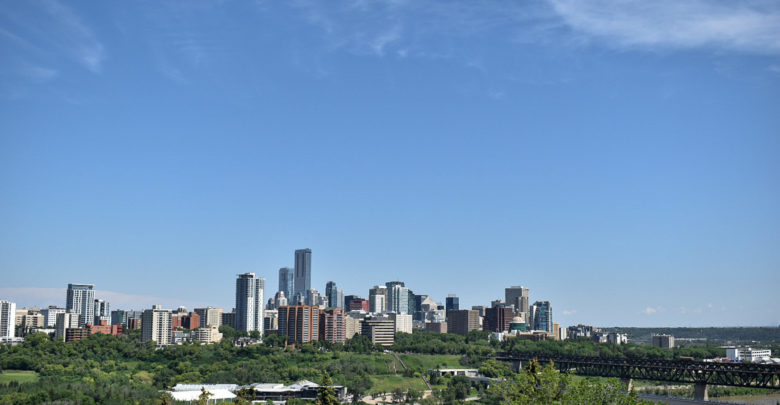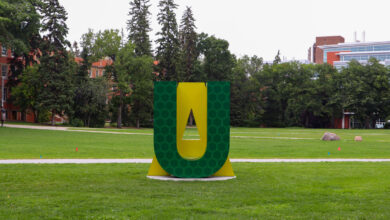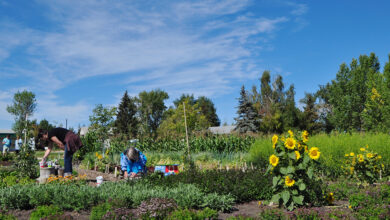 Abbeygael Kuchmak
Abbeygael KuchmakAfter being isolated inside with little opportunity for social gatherings and outdoor activities, there’s no doubt that Edmontonians’ spirits are low following the COVID-19 pandemic.
Recently, the Government of Alberta has provided the City of Edmonton with over $5 million in funds to rejuvenate the downtown core. The city is using this amount to restore social vibrancy downtown. The money will support businesses, increase safety, and improve public spaces.
Creating more space for social, outdoor, and exercise activities is a much needed remedy to the gloom from the pandemic. This can be easily accomplished by the implementation of active transportation infrastructure, which is something that the City of Edmonton has recently set their sights on in the new Downtown Vibrancy Strategy.
Active transportation is any kind of movement powered by human activity — activities like cycling, walking, rolling, and running.
According to the Downtown Vibrancy Strategy, implementing an active transportation plan would cost the city approximately $200,000 to $1 million. This would go towards expanding access to accommodate bicycles, scooters, skateboards, and pedestrians in the downtown core.
One of the best things a city can do is to ensure active, accessible, and sustainable transportation options. This is a task that the City of Edmonton has proven its commitment to. In December, they allocated another $100 million towards these proposals in the 2023 budget.
These spaces can boost mental health and wellness by granting more opportunities for social interactions and connections. As well, creating more areas for people to move around outdoors and exercise can improve your wellbeing.
Active transportation spaces can also allow people with mobility challenges to easily and safely move around outside. Having these areas can even reduce the anxiety-inducing financial burden on people who feel an obligation to purchase a car or even those who are constantly buying gas.
Additionally, these paths can give people, especially marginalized and unhoused persons, the ability to easily and safely move around the city for errands and services.
Integrating active transportation paths can also help reduce some of the environmental impacts of the pandemic. Giving people the chance to more easily and efficiently swap from a car to a more sustainable transportation could even prove to be a small step towards a more sustainable city.
Active transportation also makes the city appear more attractive to potential inhabitants. When more people use active transportation, it advertises downtown as quieter and cleaner. It’s no wonder why Edmonton is putting so much funding toward these initiatives.
The issue of bike lanes, however, has remained a sore spot for some Edmontonians. It has been at the forefront of city debates for years.
Many complain that their implementation is costly, and that the bike lanes take up much needed space when they are out of use for most of the year.
But, the city is developing plans to make sure active transportation is easily accessible throughout the year by prioritizing snow and ice removal and introducing more protected paths to promote safety and all-year use. It’s relieving to see greater efforts going in to ensure the success of these plans.
Unlike cars, active transportation paths can be used by everyone — kids, adults, wheelchair/mobility scooter users, and those who can not afford the expenses of vehicle transportation. These spaces allow Edmontonians and potential residents to have the opportunity and confidence to spend more time outside all year round and get their bodies moving, all while equally accommodating those of all financial statuses and bodily abilities.
But, some Edmontonians think these initiatives could go even farther. In Calgary, for example, train usage in the downtown core is free. This motivates people to use their cars less and transit more, which helps reduce traffic in the busiest part of the city. Plus, it increases accessibility to transit for those who need it the most.
The core of a city holds a large number of citizens that come from all walks of life. Edmonton has a duty, especially during these vulnerable economic times, to accommodate everyone and ensure accessible transportation.
Incorporating active transportation infrastructure is a great way to promote social and economic recovery in Edmonton. These are steps further taken in the spirit of downtown recovery that prioritizes the wellbeing of all Edmonton residents, any way you choose to move.




